When it comes to self-defense and concealed carry, the choice of caliber is a crucial decision that can have a significant impact on your personal safety. Two popular options that often find themselves in the spotlight for their stopping power and effectiveness are the 10mm and .357 Magnum cartridges.
Here we’ll dive deep into the world of firearms and ammunition to explore the key differences, advantages, and disadvantages of the 10mm and .357 Magnum so you can make an informed choice when it comes to your self-defense needs.
10mm vs 357: History and Nature
10mm Auto
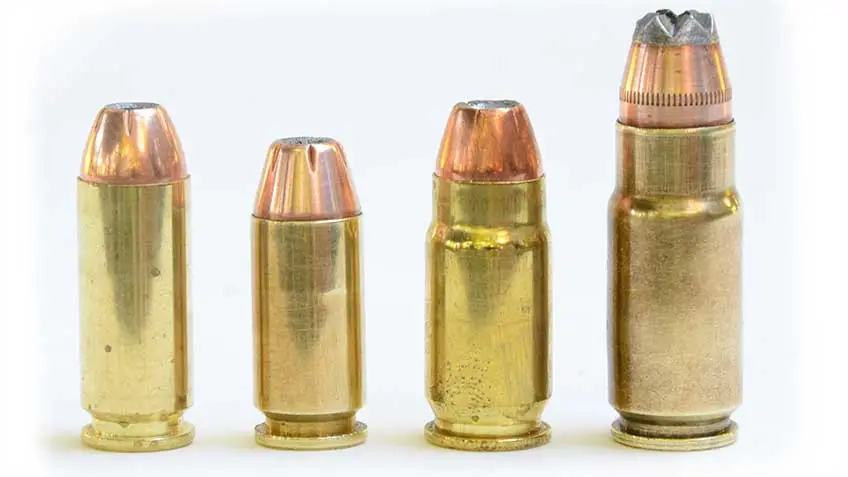
The concept for 10mm was born in the early 80’s. But its widespread use started after the infamous 1986 Miami shootout where one of the criminals killed two FBI agents and injured several others. He had taken a 9mm bullet in his arm, which had stopped only one millimeter short of his heart. So, the FBI reintroduced the 10mm in their ballistics. The bullets were heavier and had better mean velocity than what they were using at the time.
The main attraction of the 10mm cartridge is its design. It’s specific for semi-automatic pistols and can accommodate larger bullets than usual. This is why the FBI and other law enforcement agencies have adopted this ammo. Although a small number of private users have taken it up, its popularity is still growing day by day.
357 Magnum
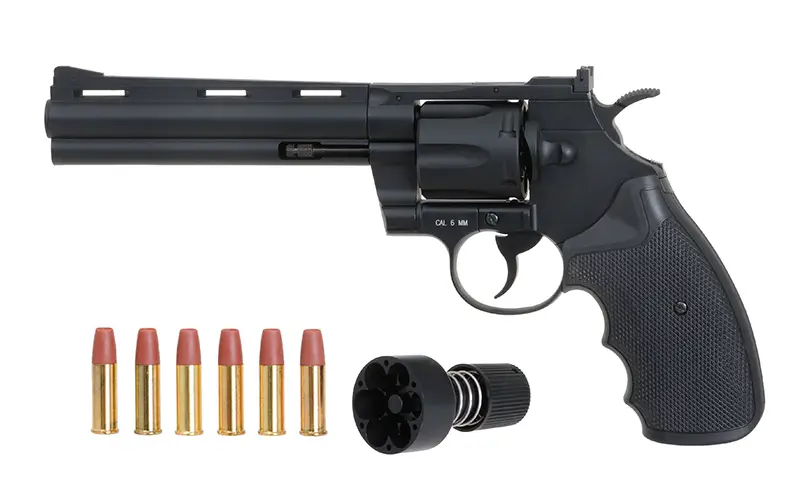
Born in the “gangster era” back in 1935, the 357 Magnum is one of the most historically significant cartridges in the United States. Gangsters of the country at that time were well-equipped and well-armored with vests, car doors and shields to avoid the law enforcers. .38-caliber rounds were used back then but they were ineffective to take the criminals down. So, there was a need for more powerful ammunition that could penetrate these barriers.
.357 Magnum came about as a modification of the .38 Special with some other major changes. The cartridge has a larger case and can pack more force behind the bullets. As a result, an increased velocity is created alongside more energy and better terminal ballistics performance.
Though the “gangster era” is no more, the 357 Magnum is still common in shooting ranges and hunting grounds. It remains one of the best choices for target shooting and self-defense even because its revolver design is suitable to be chambered in handguns that most people can handily use.
10mm vs 357: How They Differ
1. Cartridge Specs
a) Parent Case
We’ve already talked about the 357 Magnum being an elongated and more active version of the .38 Special.
The original 10mm cartridge design, on the other hand, was inspired by the .30 Remington rifle rounds with high muzzle energy and flat trajectory.
b) Rim
A rim is the outer edge or base of a cartridge which sticks out of the gun and holds the cartridge in place inside the chamber. The rim helps bullets stay positioned when you pull the trigger.
The 357 Magnum is a rimmed cartridge. When you’ve fired a round in your revolver, you need an extractor mechanism to pull out the spent cases. This mechanism then holds onto the rim to eject the empty case.
But since a 10mm cartridge is designed for automatic or semi-automatic firearms, it doesn’t need a rim. Because, empty cartridges in these pistols are automatically ejected by the force of the gun’s slides. So, the manufacturers include a rimless design in 10mm cartridges so that you can insert and discard the bullets in a smoother way.
c) Bullet Diameter
The bullets in the 357 Magnum are narrower (0.357 inches) than those in 10mm Auto (0.40 inches). As a result, the energy and the velocity behind each shot vary between the two. However, bullet diameter is not the only factor to influence these variations.
d) Case length
The 357 Magnum has a larger case than 10mm Auto. This size difference also influences the case capacity of the cartridges which is next in our list.
e) Case Capacity
26.2g grains of bullets can be packed into the 357 Magnum case as opposed to 24.1g into the 10mm Auto. This proves the overall higher capacity of the 357 Magnum case that can include more powerful combinations of bullets. Also, greater the grains, heavier the bullet weights and shorter their trajectory.
f) Overall Length
357 is longer than 10mm due to the rim attached with it at the base. This length is taken into account when designing a gun.
The 10mm cartridge is appropriate in size to fit into automatic pistols used for quick firing in self-defense.
Similarly, the length advantage of the 357 Magnum cartridge is appropriate for designing rimmed revolvers.
g) Maximum Pressure
10mm can handle a maximum pressure of 37, 500 in PSI units whereas 357 offers 35, 000 PSI. But in case of muzzle velocity (the velocity with which a bullet leaves the gun), max pressure isn’t the only factor involved.
Depending on the bullet weights and grain size, the muzzle velocity can vary between both cartridges despite the 10mm having more pressure.
h) Base Diameter
10mm has a greater base diameter than 357. The base diameter of the 10mm round is 0.425 inches while the 357 Magnum cartridge has a base diameter of 0.379 inches.
i) Neck Diameter
Both the cartridges have almost the same metrics of neck diameter as their respective base diameter.
| Cartridge Specs | 10mm Auto | 357 Magnum |
| Firearm Type | Automatic or Semi-automatic Pistol | Magnum Revolver |
| Parent Case | .30 Remington Rifle | .38 Special |
| Rim | Rimless | Rimmed |
| Bullet Diameter | 0.40 inches | 0.357 inches |
| Case Length | 0.992 inches | 1.29 inches |
| Case Capacity | 24.1 grains | 26.2 grains |
| Overall Length | 1.260 inches | 1.59 inches |
| Maximum Pressure | 37, 500 PSI | 35, 000 PSI |
| Base Diameter | 0.425 inches | 0.379 inches |
| Neck Diameter | 0.423 inches | 0.379 inches |
2. Velocity
With the 357 Magnum, you can achieve a greater muzzle velocity. Generally, you can load as low as 110 grains in a 357 Magnum case. This relatively lower bullet weight makes the cartridge reach about 1300 fps (feet per second) in velocity.
On the contrary, in a 10mm case, the minimum weight of the bullets is around 170-180 grains. So, you can easily guess that these heavier bullets will cause a lower velocity instead.
3. Penetration
With higher velocity, you can expect deeper penetration by the 357. However, the report from the FBI Ballistics Gel Testing suggests that it actually over-penetrates. It may have some applications in hunting but create a problem in target shooting and self-defense because you certainly don’t want your bullet to exit your target and hit another innocent man right on the other side.
Since the 10mm has lower velocity, it penetrates into a shorter distance than the 357.
Both 10mm and 357 Magnum were developed for law enforcement to achieve greater penetration to fight the threats. So, they have their respective uses and the differences we’re discussing here are minimal.
4. Energy
You’ve learnt by now that the 10mm cartridge holds larger bullets in its case. This is why it usually packs a greater muzzle energy than the 357. There are some rare instances where 357 can beat 10mm in energy but in most of the cases, 10mm overpowers its counterpart by over 100 ft-lbs.
| Company | 10mm Muzzle Energy | 357 Magnum Muzzle Energy |
| Hornady | 684 ft-lbs | 548 ft-lbs |
| Winchester | 559 ft-lbs | 410 ft-lbs |
5. Recoil
You all know Newton’s Third Law. Every action has an equal and opposite reaction.
So, when you fire a gun, it’s obvious that the muzzle is going to push back on you. This is called ‘Recoil’.
Recoil is a crucial aspect to be considered when you are deciding to buy a gun. It mostly depends on the weight of the bullets. The heavier the bullet, the more the force needed to fire and consequently, more recoil. Muzzle velocity also controls recoil. Greater velocity will always result in stronger recoils.
The law enforcement agencies struggled a lot with the original 10mm Auto due to its excessive recoil issue. This is the reason why the FBI had initially stopped using it for a while. Eventually, they fixed the problem by adding low recoil-producing rounds.
The 357 Magnum has even greater recoil. This is because of the high muzzle velocity it produces.
When compared, both the cartridges have heavy recoils but the 357 has a slightly harder one. Around 10fps recoil can be felt when shooting a 357 Magnum revolver whereas the value is around 9fps for a 10mm Auto.
So, in rapid-fire situations, the 357 will return a lot of the muzzle energy back onto your wrist, which will make it hard for you to concentrate on taking the next shot. A 10mm is definitely preferable in these instances.
6. Magazine Capacity
When you compare a revolver with an automatic or semi-automatic handgun, it’s apparent which one has more magazine capacity. The automatic handgun, indeed!
A 10mm Auto is capable of carrying up to 15 rounds in its magazine whereas a 357 Mag can contain only 6.
7. Stopping Power
Whenever the debate of 10mm vs 357 comes up, many arguments are made regarding each of their stopping power.
We have no definite answer to which one of them has better stopping power. Because, stopping power doesn’t depend only on the cartridge in a firearm. There are multiple other factors at play, such as shot placement, bullet design and shooter proficiency.
Both the cartridges are widely adopted in law enforcement for self-defense purposes. FBI Ballistics Gel Test also concludes that both ammos are sufficient enough to aid in self-defense situations. But without applying proper shot placement techniques, no metrics can decisively tell you that one of them is better than the other in this regard.
8. Ballistics
Ballistics reports vary a lot depending on the manufacturers, production procedure, barrel length and environmental factors.
We have charted the possible range of values of a typical ballistics report on both 10mm and 357 Magnum.
Possible Ballistics Report on a 10mm
Ammunition: 10mm Auto
Firearm: Glock 20
Barrel Length: 4.6 inches
| Bullet Weight (grains) | Muzzle Velocity (fps) Range | Muzzle Energy (ft-lbs) Range | Trajectory (inches) Range | |||
| 50 Yards | 100 Yards | 50 Yards | 100 Yards | 50 Yards | 100 Yards | |
| 155 | 1,120 – 1,240 | 1,045 – 1,165 | 500 – 580 | 455 – 535 | -3.5 to -1.5 | -20.0 to -18.0 |
| 165 | 1,090 – 1,210 | 1,020 – 1,140 | 490 – 560 | 445 – 525 | -3.3 to -1.2 | -19.5 to -17.5 |
| 180 | 1,040 – 1,160 | 975 – 1,095 | 520 – 590 | 435 – 515 | -3.0 to -0.9 | -19.0 to -17.0 |
| 200 | 950 – 1,050 | 900 – 1,000 | 470 – 530 | 420 – 480 | -2.5 to -0.5 | -18.0 to -16.0 |
Possible Ballistics Report on a 357 Magnum
Ammunition: 357 Magnum
Firearm- 357 Magnum Revolver
Barrel length- 6 inches
| Bullet Weight (grains) | Muzzle Velocity (fps) Range | Muzzle Energy (ft-lbs) Range | Trajectory (inches) Range | |||
| 50 Yards | 100 Yards | 50 Yards | 100 Yards | 50 Yards | 100 Yards | |
| 110 | 950 – 1,150 | 900 – 1,050 | 280 – 540 | 250 – 490 | -0.5 to -0.3 | -2.9 to -1.8 |
| 125 | 1,050 – 1,250 | 1,000 – 1,100 | 425 – 545 | 340 – 540 | -0.3 to -0.1 | -1.8 to -0.7 |
| 150 | 1,000 – 1,150 | 950 – 1,100 | 395 – 540 | 320 – 490 | -0.4 to -0.2 | -2.3 to -1.2 |
| 180 | 950 – 1,050 | 900 – 950 | 425 – 535 | 340 – 485 | -0.6 to -0.4 | -3.5 to -2.4 |
| 200 | 900 – 1,000 | 900 – 950 | 395 – 495 | 320 – 465 | -0.7 to -0.5 | -4.2 to -3.1 |
As you can see, with bullet weights and yards, the muzzle velocity, energy and trajectory values can differ.
Make no mistake, an actual ballistics report will look drastically different from this one. The report will look more precise and include more information. The ranges we’ve given here are based on approximate performances from past data. A real-time report will possibly cross our advertised value ranges as well.
9. Reloading
If you’re a reloader and used to change bullets and gunpowder on your own, you’ll enjoy using both the cartridges. Because, bullets for their casings are easily found and really popular.
But you have to adapt to different processes for reloading each. For example, the .357 is a revolver cartridge with larger case length and capacity than those of a 10mm semi-automatic pistol.
Also, bullets are generally rimmed and slightly narrower in 357 Magnum while in 10mm Auto, they are rimless and wider. They operate at different maximum pressures as well. The gunpowder quality is another area. The 357 Magnum needs a more slow-burning powder than 10 mm. All these factors will influence how you should reload your handgun.
10. Ammo Variety
Since the 357 Magnum has been on the market for a longer period of time, it offers a wider range of configurations in terms of bullet types, calibers (size and dimensions of the ammunition) and case materials. However, varieties of the 10mm are also increasing as we speak.
11. Ammo Availability
The 357 Magnum is more accessible and available for the exact same reason mentioned right above. Since 10mm was once dropped by the FBI, its popularity was on a decline before booming again with the introduction of Glock-20 (A semi-automatic pistol). However, most manufacturers have adopted production of the cartridge in recent times.
On the other hand, almost all the manufacturers have been providing services on the 357 since its arrival. As a result, there have been more users and consequently greater demand and production of the cartridge than 10mm.
12. Price
At the time of writing this article, the lowest price found is $1.05/round for a defensive 10mm Auto and $0.57/round for a hunting 357 Magnum on Gun.deals. Mind you, the price range actually varies between manufacturers, shops and time periods.
The differences between the two ammo prices are also minimal most of the time. So, it’s not possible to objectively determine a cheaper option. You should be able to decide on your requirements once you’re in the market and pay accordingly.
13. Applications
Although both cartridges have a massive range of uses, you can consider our analysis before choosing one for a specific purpose.
a) Hunting
Both 10mm and 357 Magnum can be effective choices for hunting. The 10mm is well-designed for deep penetration and its heavier bullets generate enough power for that. So, you can go hunting medium-sized games like deer, hogs and black bears with a 10mm semi-automatic handgun without worries.
Even in bear defense, the high penetration capability of 10mm can help greatly.
However, hunting is not about shooting down an animal only. There is an ethical aspect to it as well.
Bears have large bones and your bullets should bypass these bones and reach deep into the flesh to kill it. Otherwise, you would only wound and hurt the animal. In these cases, 10mm is probably not the best option.
The 357 Magnum has been regarded as one of the deadliest weapons to take into the forest. It penetrates deeper than 10mm and is also handy in ethically killing even smaller games. Since it offers versatility in different types and sizes of bullets, you can customize the casing and the firearm itself depending on the game you’re hunting.
So, while both the cartridges are proven to be useful in hunting, the 357 Magnum revolver is slightly preferable because of its efficiency and dynamic nature.
However, no matter which handgun you opt for, you should be able to shoot on spot to kill the game.
b) Self-defense
When it comes to self-defense, your capability to handle your gun matters more than the gun itself. It’s totally up to you in critical moments like this to study the situation and take the next step.
Are you comfortable with the recoil of guns? If not, 10mm cartridge is your best chance since it has lower recoil. So, you can quickly fire back-to-back shots to neutralize your threat.
But if you are handy with recoils pushing back and can fire the second bullet without wasting any time, you should use the 357 Magnum revolver since it has better velocity, penetration and stopping power.
When it’s the matter of life and death, every second of your time is precious. This is where reload speed comes in. It’s far easier to reload a semi-auto pistol than a revolver. So, a 10mm is definitely preferable to a 357 Magnum in that sense.
At the end of the day, all of it boils down to the fact that you should be able to make a conscious decision of which firearm you have trained with the most, to survive during a self-defense situation.
c) Concealed Weapon Carry
If you are legally permitted or obliged to carry a weapon, a 10mm semi-auto handgun is clearly the better option because of its magazine capacity. When you’re out on the road, you should be able to carry as many rounds as possible to survive any type of threat.
Revolvers normally require speed loaders and contain far fewer rounds than semi-auto pistols. Speed loaders are difficult to carry as opposed to magazines.
So, it’s obvious that for concealed carry, the 357 Magnum is not an ideal choice.
d) Home Defense
The dimensions (size, weight and width) of a firearm are not an issue in home defense. Whether it’s a semi-auto or a revolver, you can easily store them in a convenient location of your house. Normally, you should keep them in a secured gun vault or a nearby nightstand.
However, it matters how quickly you can access your weapons once your house is under attack. Then, the discussion will go back to our self-defense section. Depending on how you handle recoils and reload speed, you can choose one of the cartridges.
Our Take
Here we covered the uses and credentials of two of the most popular and practical handguns of the current era – 10mm vs 357. Whether for hunting or self-defense, the 10mm semi-auto and the 357 Magnum have always been a top choice for many.
If you fancy yourself automatic firearms, you should definitely try out the 10mm Auto. It lacks velocity and penetration. But minimal reload speed, higher magazine capacity and lesser recoil have made it one of the most sensible choices for self-defense in the semi-automatic platform.
But if you’re a revolver fan, the 357 Magnum is the most obvious option for its incredible velocity and accurate penetration.
So, if you are aiming for some bombastic experience with your handgun whether it’s a training session or you are suddenly facing a bear, the 357 is your savior. For a more technical and fast-paced action, 10mm can’t ever go wrong.
But one thing is for sure, no matter which handgun you choose for any of the purposes, you won’t be disappointed at all. They both have their merits and they’ve been well tested in the real world.
FAQs
Q. Is a 357 more powerful than a 10mm?
Ans. Both cartridges have almost similar energy performances. However, since a 10mm Auto accommodates larger bullets, it offers more muzzle energy than a 357.
Q. Is 357 more powerful than 9mm?
Ans. From a ballistic point of view, the .357 Magnum is more powerful than 9mm. It has more velocity and energy than the other.
Q. Is 10mm most powerful?
Ans. The 10mm cartridge is naturally more powerful than most pistols in the semi-automatic platform. But it’s not necessarily the most powerful. For example, 44 Magnum can easily pack more force with around 240 grains than a 10mm.
Q. Why is 357 so good?
Ans. 357 Magnum produces a great muzzle velocity. With intense velocity, it can also cause deep penetration. Having these desired qualities makes the 357 Magnum one of the best revolvers to use.
Q. Is 45 or 10mm more powerful?
Ans. A 10mm has higher muzzle velocity and energy than a 45 or .45 ACP (Automatic Colt Pistol). So, a 10mm is generally considered more powerful than a .45 ACP.
Q. Is 357 more powerful than 45?
Ans. Yes, according to the ballistics report, a 357 is more powerful because it has greater muzzle velocity and muzzle energy.
Q. What caliber is more powerful than 10mm?
Ans. Many handgun cartridges are more powerful than 10mm. .50 AE (Action Express) is one of them. The .50 AE contains larger bullets and consequently, more muzzle energy which sets it apart from the 10mm.
Q. What’s stronger than a 357?
Ans. Several handgun cartridges can outmatch a 357 in strength. .44 Magnum, .460 S&W Magnum, .500 S&W Magnum are to name a few.

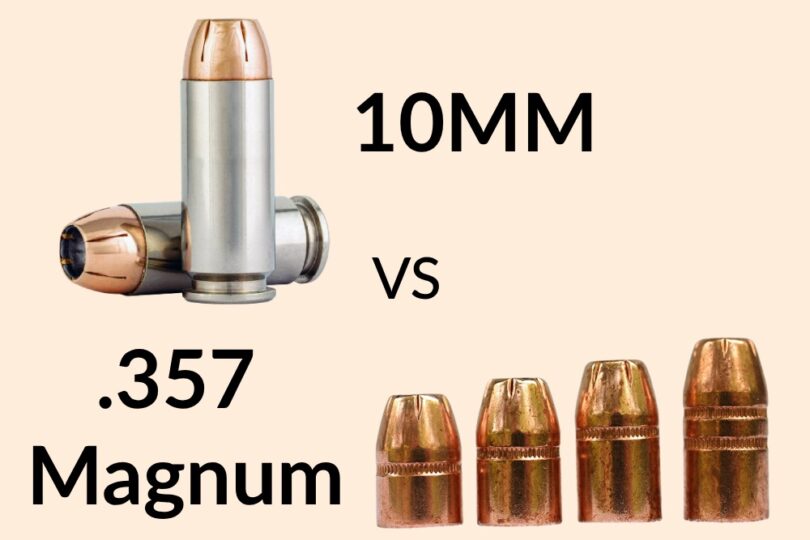



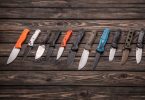
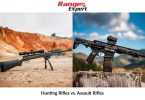
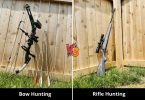

Leave a Comment